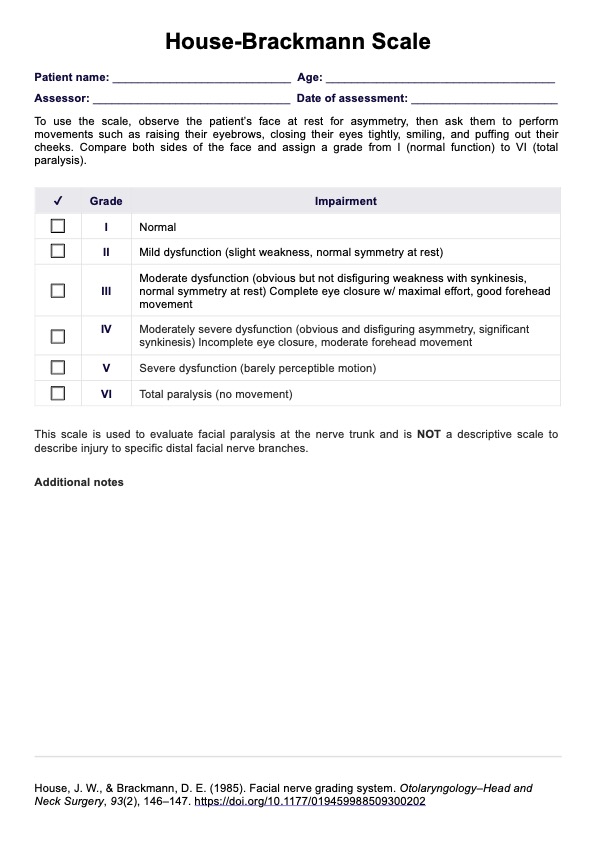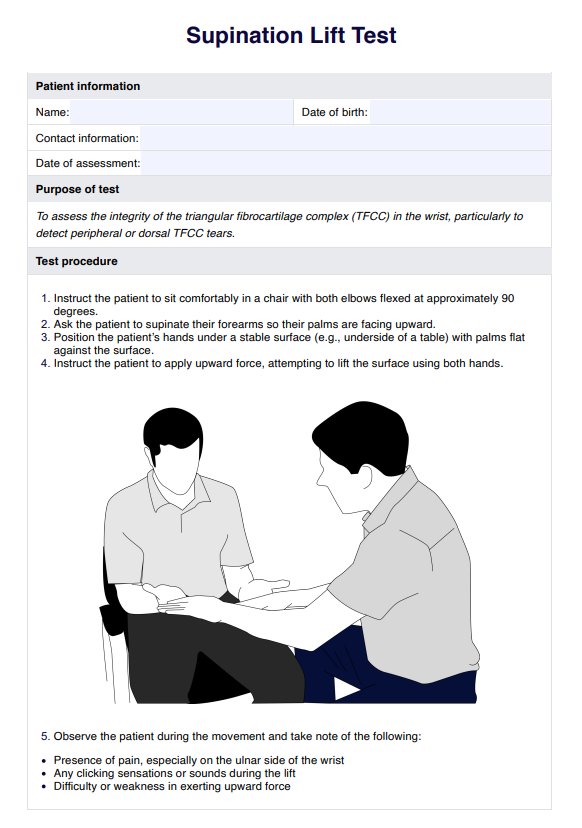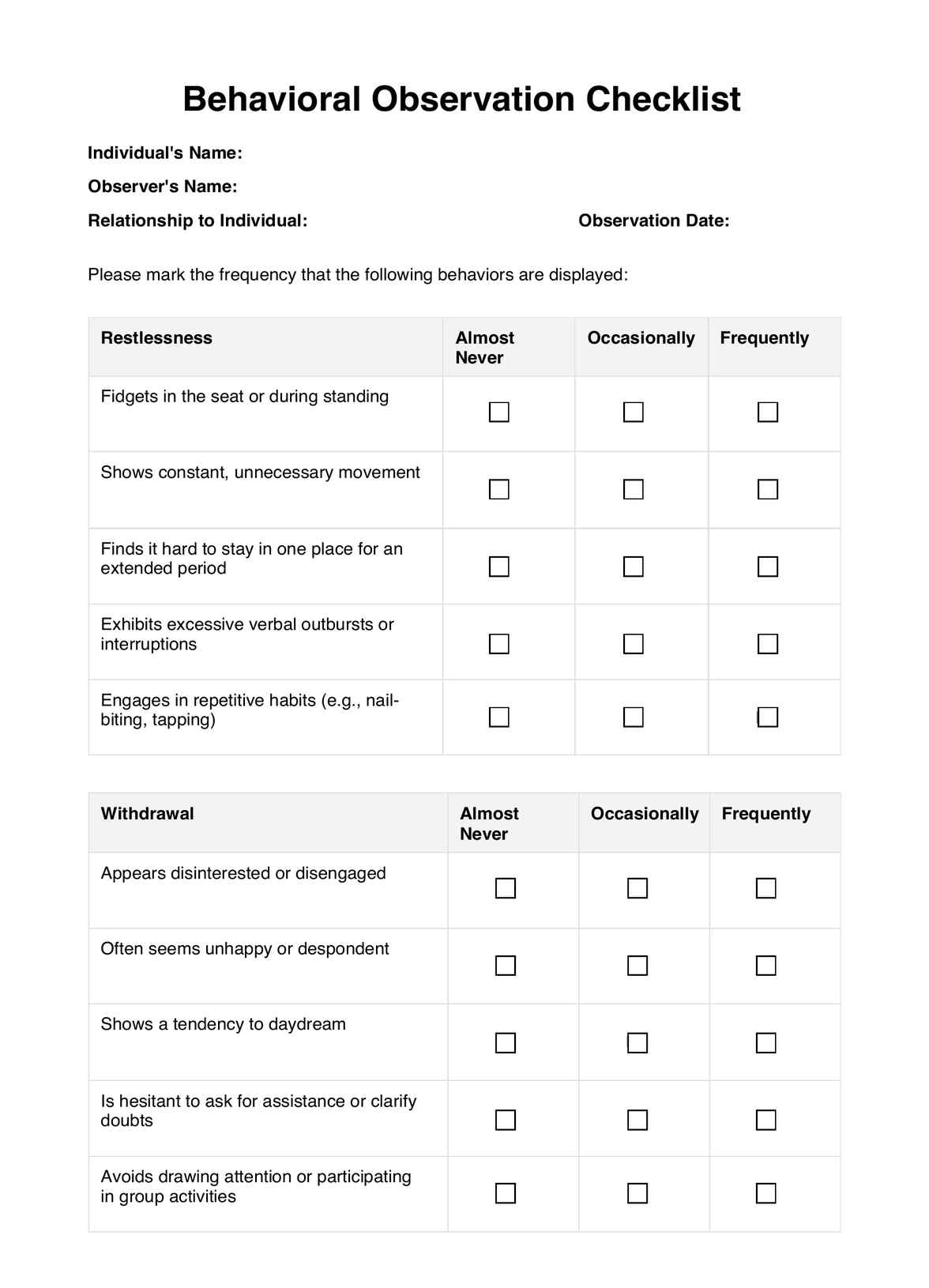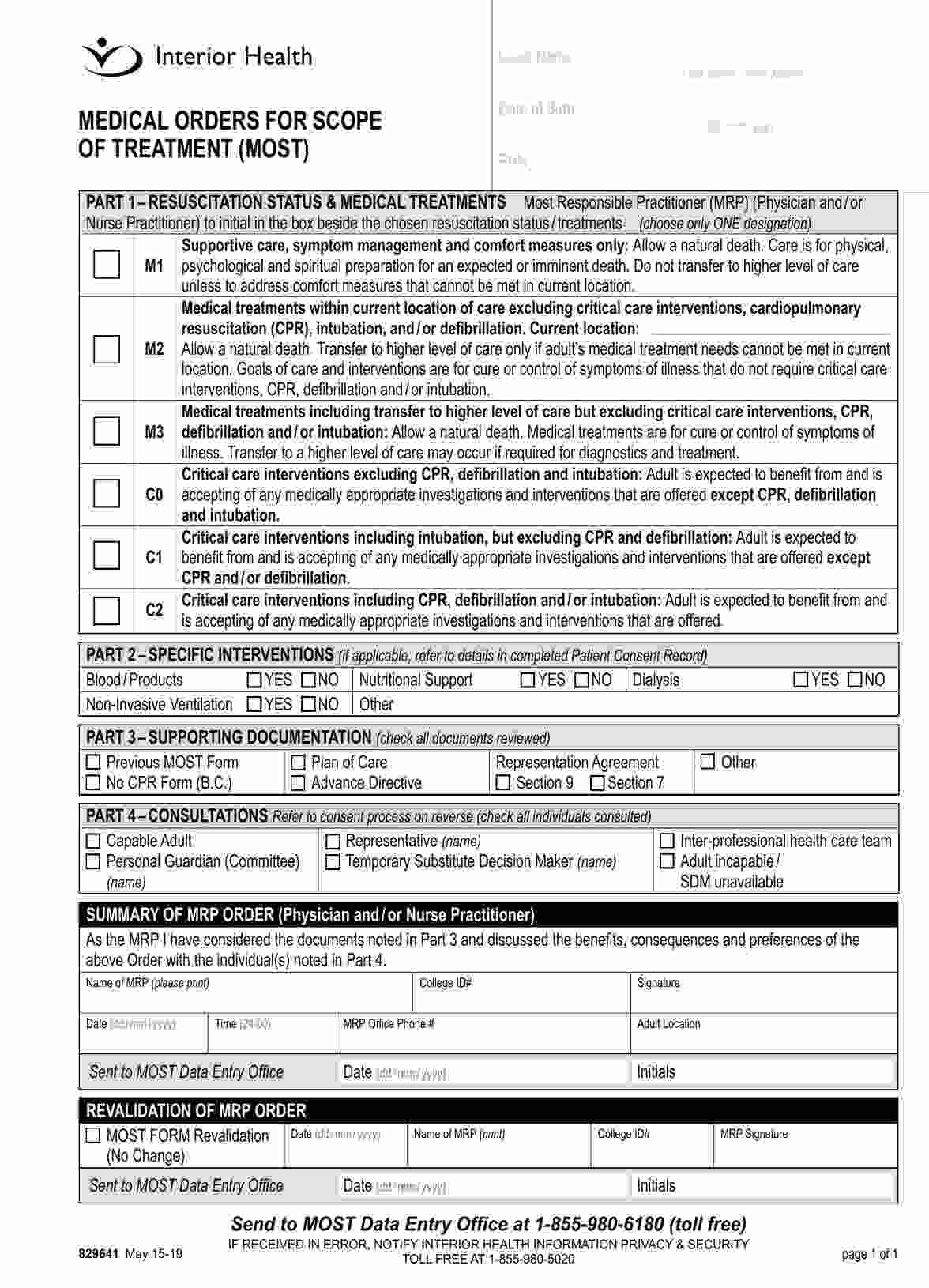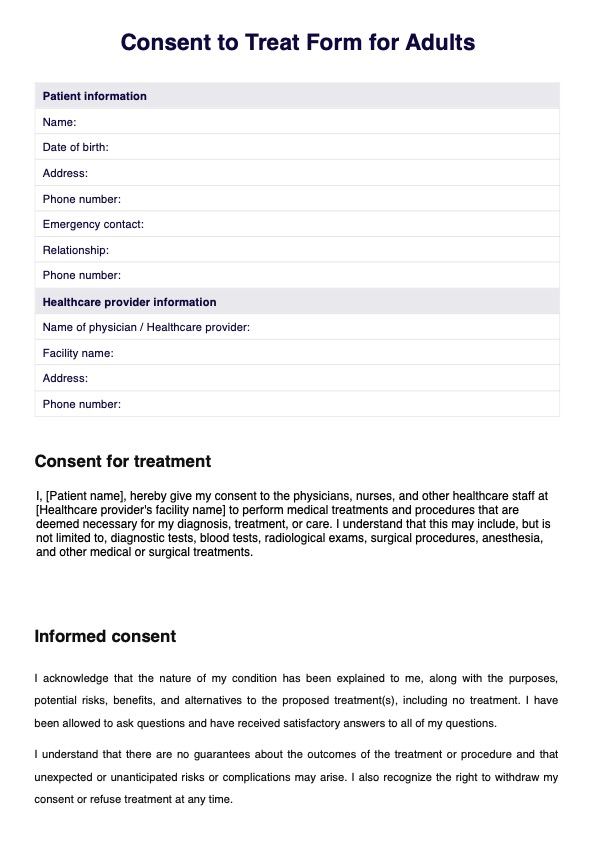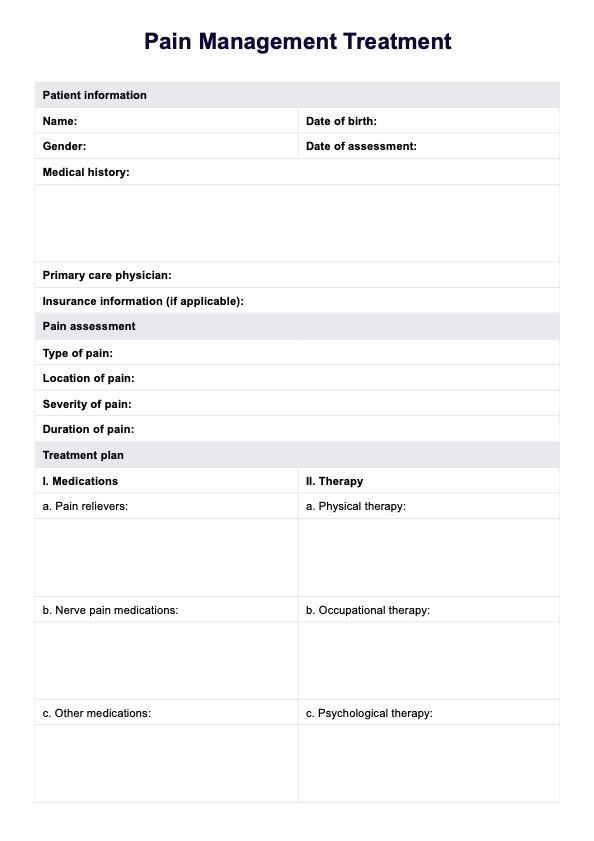Gluten-Free Diet Chart
Provide your client with a Gluten-Free Diet Chart template to help them create a meal plan and discover the essentials of a gluten-free diet.


What is a Gluten-Free Diet Chart?
A Gluten-Free Diet Chart is an invaluable resource in the journey to a gluten-free diet. It's a comprehensive guide that goes beyond being a meal planner, helping practitioners help individuals navigate the complex world of gluten-free eating. This chart outlines daily meal plans, ensuring that every dish adheres to the strict guidelines of a gluten-free diet. It breaks down meal planning into manageable segments, usually by days of the week and meal types, such as breakfast, lunch, and dinner.
By using this document, patients can better avoid gluten-containing foods, and you can better ensure a balanced intake of nutrients for them, which is often a concern in restrictive diets like a strict gluten-free diet. Additionally, such a chart can be a platform for creativity and experimentation for you and your client within dietary constraints, encouraging users to explore a variety of gluten-free foods and recipes beyond known naturally gluten-free foods like sweet potato and certain oats and oat products. However, you should exercise caution when recommending oats, as some may be contaminated with gluten during processing, posing risks for clients with celiac disease or gluten sensitivity. It's essential to verify that the oats are certified gluten-free.
Gluten-Free Diet Template
Gluten-Free Diet Example
How does our Gluten-Free Diet Chart work?
Helping your client navigate a gluten-free diet can be challenging, but with the help of a printable Gluten-Free Diet Chart, it becomes more manageable. Follow the steps in this section on how to use the template to help your client plan their meals effectively.
Step 1: Download the chart and familiarize the patient with food options
The first step is to download the chart provided in this template. At this point, it's also best to help your patients familiarize themselves with gluten-free foods like fruits, vegetables, meats, certain grains like rice and quinoa, and gluten-free bread, pasta, and snacks. Should you need a guide, Carepatron offers a gluten-free food list you can access where you can list foods containing gluten, such as wheat, barley, rye, triticale, and more.
Step 2: Plan meals
Using the knowledge of gluten-free foods, help your patient with their gluten-free diet plan. Fill in the chart with breakfast, lunch, dinner, and snack options for each day. Ensure they have a variety of foods even when eating gluten-free to maintain a balanced diet. These steps let them and you think ahead about meals, making your patient's grocery shopping and cooking more organized. Remind your patient that they may take their diet chart when grocery shopping, preparing, and storing meals.
Step 3: Track and adjust
As the patient uses the chart, have them track their meals and how they feel. This tracking can help identify sensitivity or preferences, allowing you and the patient to adjust future meal plans and nutritional balance.
When would you use this Gluten-Free Diet Chart?
The Gluten-Free Diet Chart is a versatile tool used in various situations and by different practitioners. Here are some scenarios where this chart proves particularly useful:
Transitioning to a gluten-free diet
For individuals who have recently been diagnosed with celiac disease or gluten sensitivity, transitioning to a gluten-free diet can be overwhelming. You can use and give them a chart to help them organize and plan gluten-free meals, making the transition smoother and less stressful.
When in need of a visual aid
The chart can serve as a visual aid to educate clients about the variety of gluten-free food options and how to structure their meals. It provides a clear and concise reference for understanding the basics of meal planning without gluten.
Routine meal planning
The chart benefits patients who create gluten-free meal plans, even those who are well-versed in a gluten-free lifestyle. It helps maintain variety in the diet and ensures balanced nutrition throughout the week. In addition, the chart can also help patients when shopping for gluten-free products—from gluten-free labeled oats to gluten-free flours—including gluten-free processed foods, which a follower of a gluten-free diet excludes or often forgets.
Health and wellness programs
The Gluten-Free Diet Chart can be distributed to participants in corporate or community wellness programs who are interested in eliminating gluten for health reasons.
Benefits of using our free Gluten-Free Diet Chart
There are many benefits to using our template, and it can vary depending on individual goals and how the chart is utilized. But for an overview, here's a list of the chart's benefits.
Improved digestive health and increased energy levels
By using the chart to guide a patient's meals, those with celiac disease or non-celiac gluten sensitivity are most likely to find significant improvements in their digestive health and an increase in energy levels due to improved nutrient absorption and better overall digestive health.
Nutritional awareness
Using the chart and giving it to patients encourages a heightened awareness of nutritional content, which often leads to better-balanced meals and ensures that all necessary nutrients are included.
Symptom tracking and identification
Because we provided a space where you and your clients can jot down observations or notes, the chart can also be used to track symptoms of specific foods consumed. This helps identify potential food sensitivities or intolerances beyond gluten. Understanding these patterns is crucial for tailoring a diet that optimizes health.
Commonly asked questions
A Gluten-Free Diet Chart is commonly requested by individuals diagnosed with celiac disease or gluten sensitivity, who must strictly avoid gluten in their diet. Health enthusiasts exploring gluten-free eating for potential health benefits also show interest in these charts.
Dietitians, nutritionists, and health coaches often use these charts to assist their clients in meal planning and ensuring a balanced, gluten-free diet. Parents of children with gluten sensitivities or allergies also seek out these charts to help plan family meals that are safe and nutritious for their children.
A Gluten-Free Diet Chart is used as a guide to plan and organize meals that are free from gluten. They help individuals adhere to a gluten-free diet by providing a structured framework for meal planning. These charts typically outline meals for each day of the week, covering all meal times, including breakfast, lunch, dinner, and snacks. They are also used to ensure a balanced intake of nutrients, which can be a challenge when eliminating gluten-containing foods.
This chart is an educational and counseling tool for health professionals. It helps clients understand and adapt to a gluten-free lifestyle.
The time it takes to create and utilize a Gluten-Free Diet Chart can vary. The initial setup, including planning meals for a week, may take an hour or two, especially for those new to gluten-free eating.
Over time, as one becomes more familiar with gluten-free foods and meal planning, it becomes quicker and more intuitive. The chart is typically used weekly, and users may spend a few minutes each day reviewing and adjusting their meal plans as needed. For health professionals, preparing a customized chart for a client could take longer, depending on the individual's dietary needs and preferences.


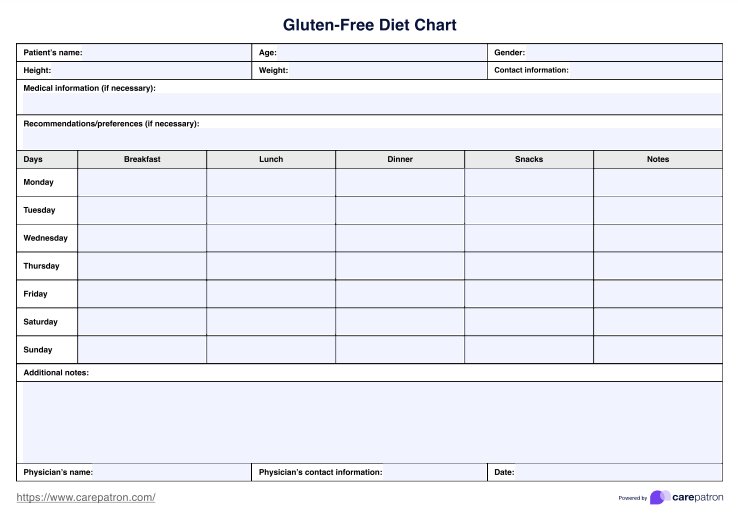
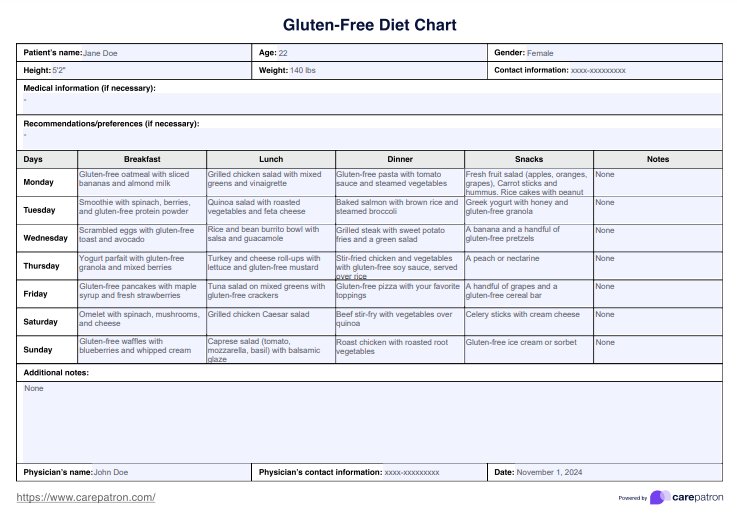

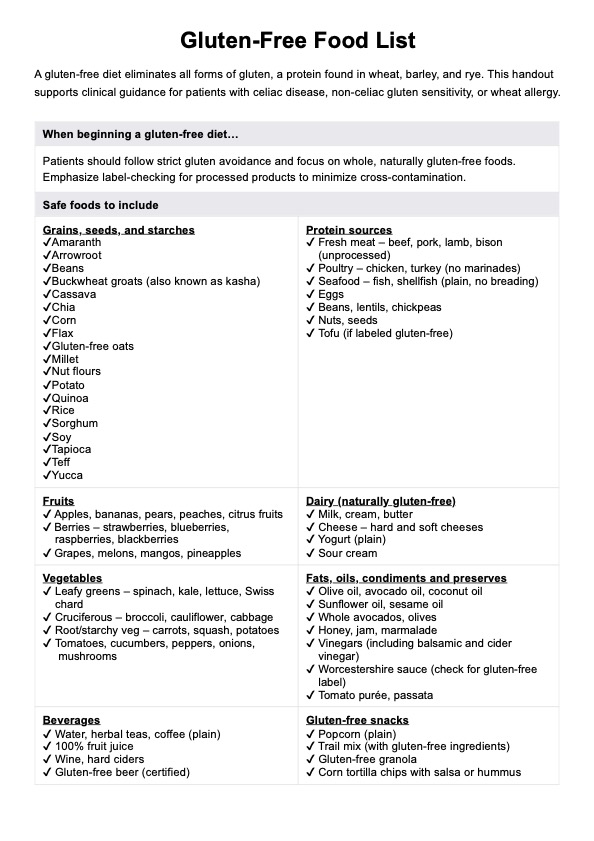
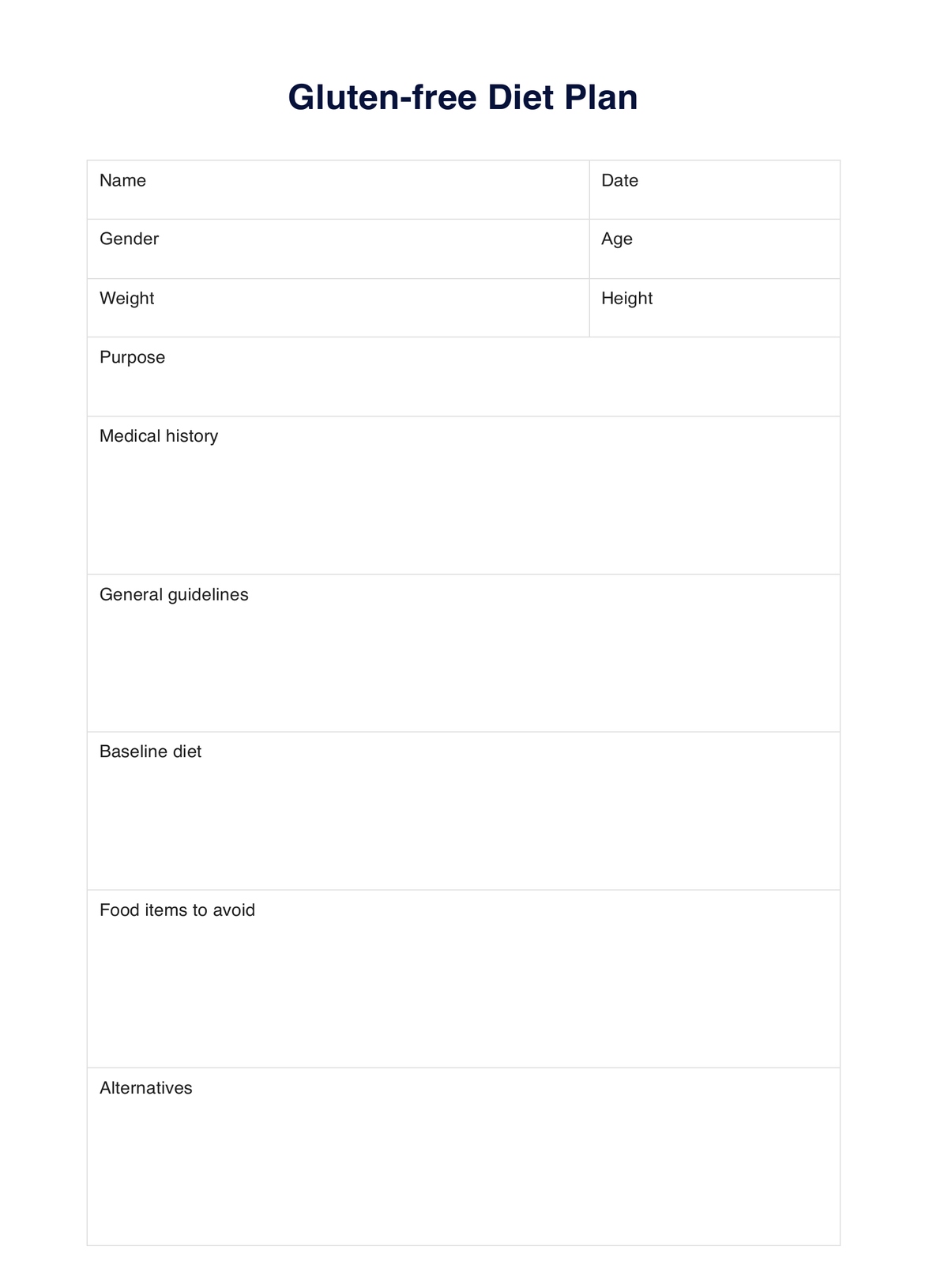
















-template.jpg)


















































































